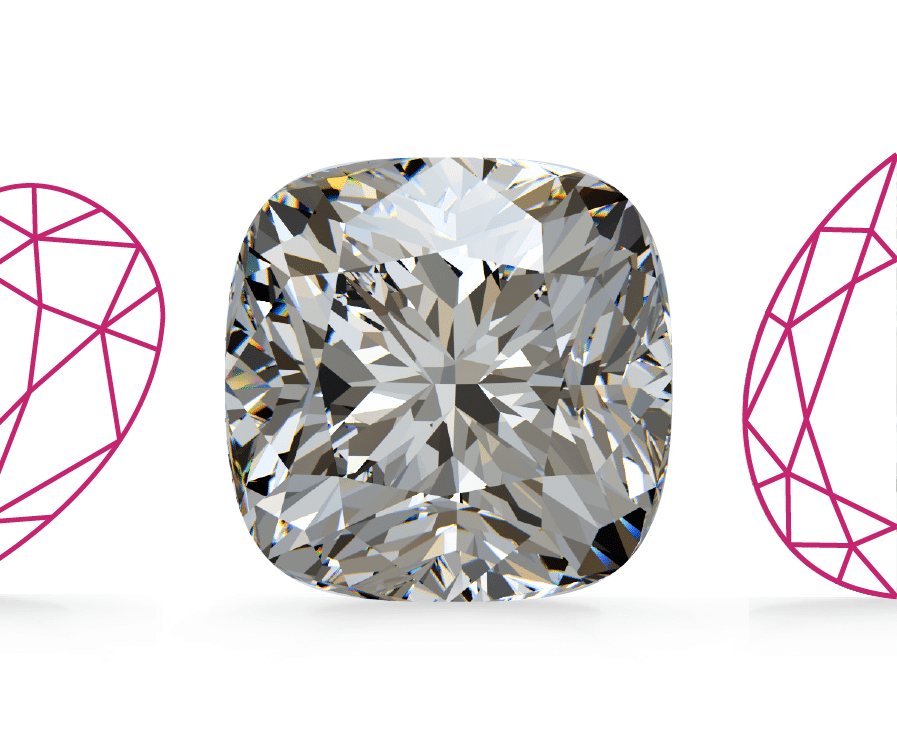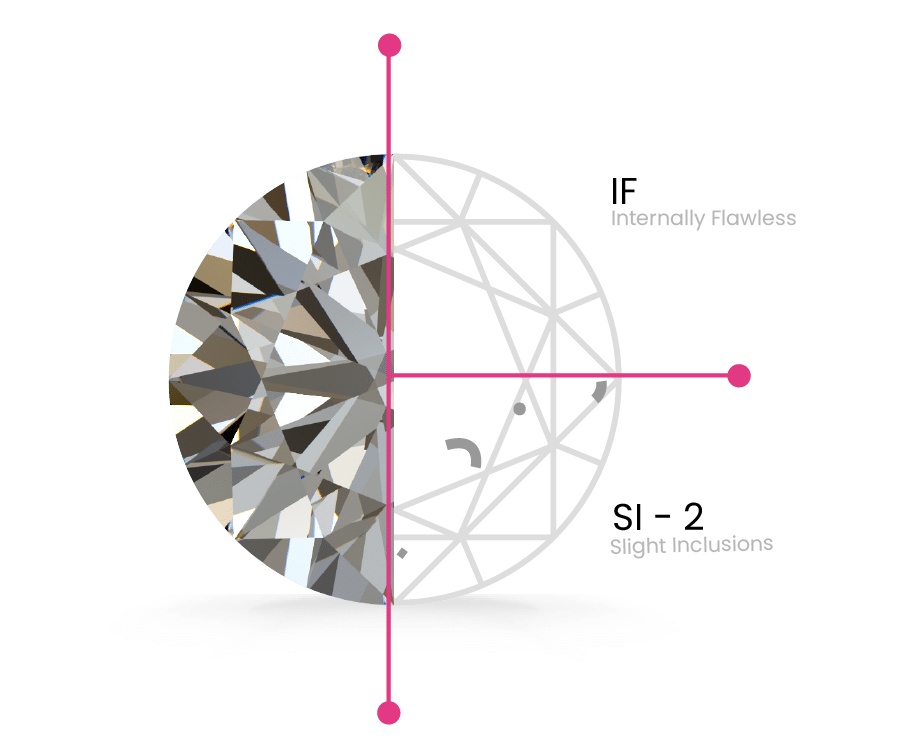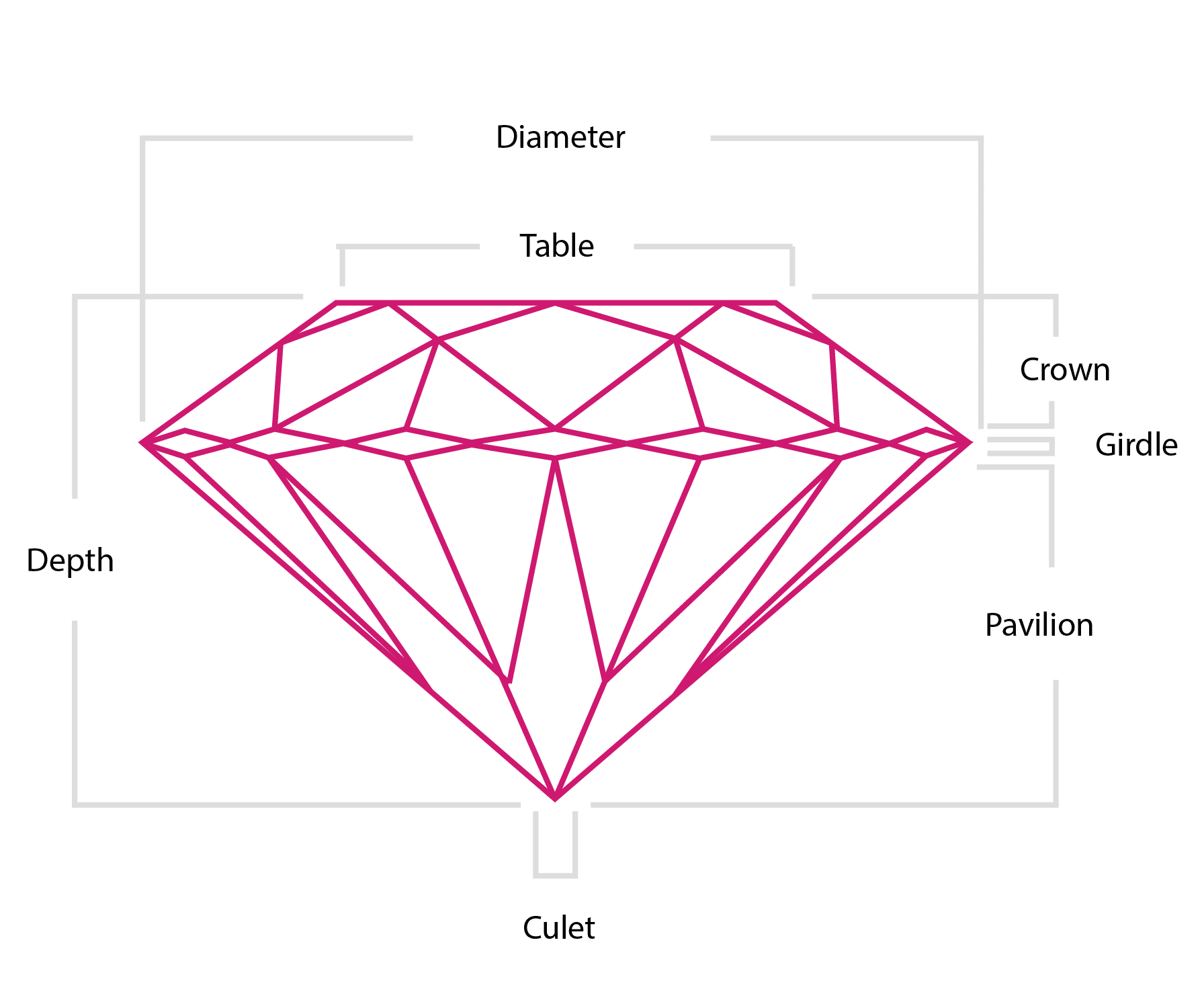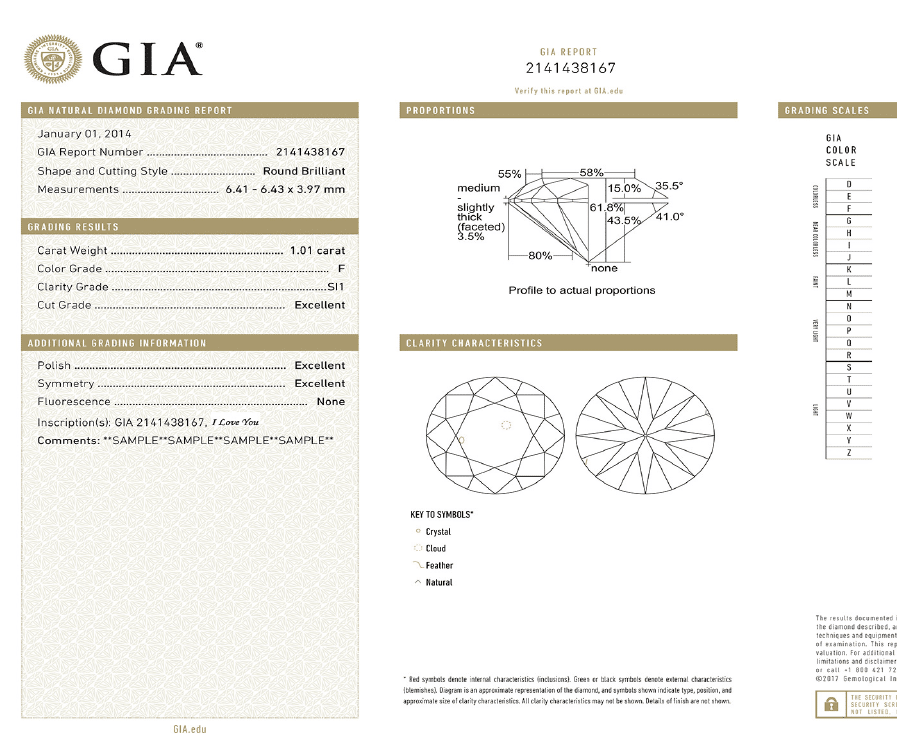Diamond Colours
Diamonds come in a variety of colours, some of them highly prized (pinks, blues, even yellow). However in a white diamond, the presence of a yellow tint will lower the price of a diamond. The less body colour in a white diamond, the more true colour it will reflect, and thus the greater its value.
The GIA grades diamonds on a scale of D (colourless) through Z (light colour). All D-Z diamonds are considered white, even though they contain varying degrees of colour. True fancy coloured diamonds (such as yellows, pinks, and blues) are graded on a separate colour scale.

Diamond Colour Chart
Diamond Colour Grades:
The M color grade is typically the lowest color grade offered by online diamond vendors. Although M color diamonds can look warm and beautiful in antique yellow gold settings, their color is quite easy to notice even with the naked eye.

















